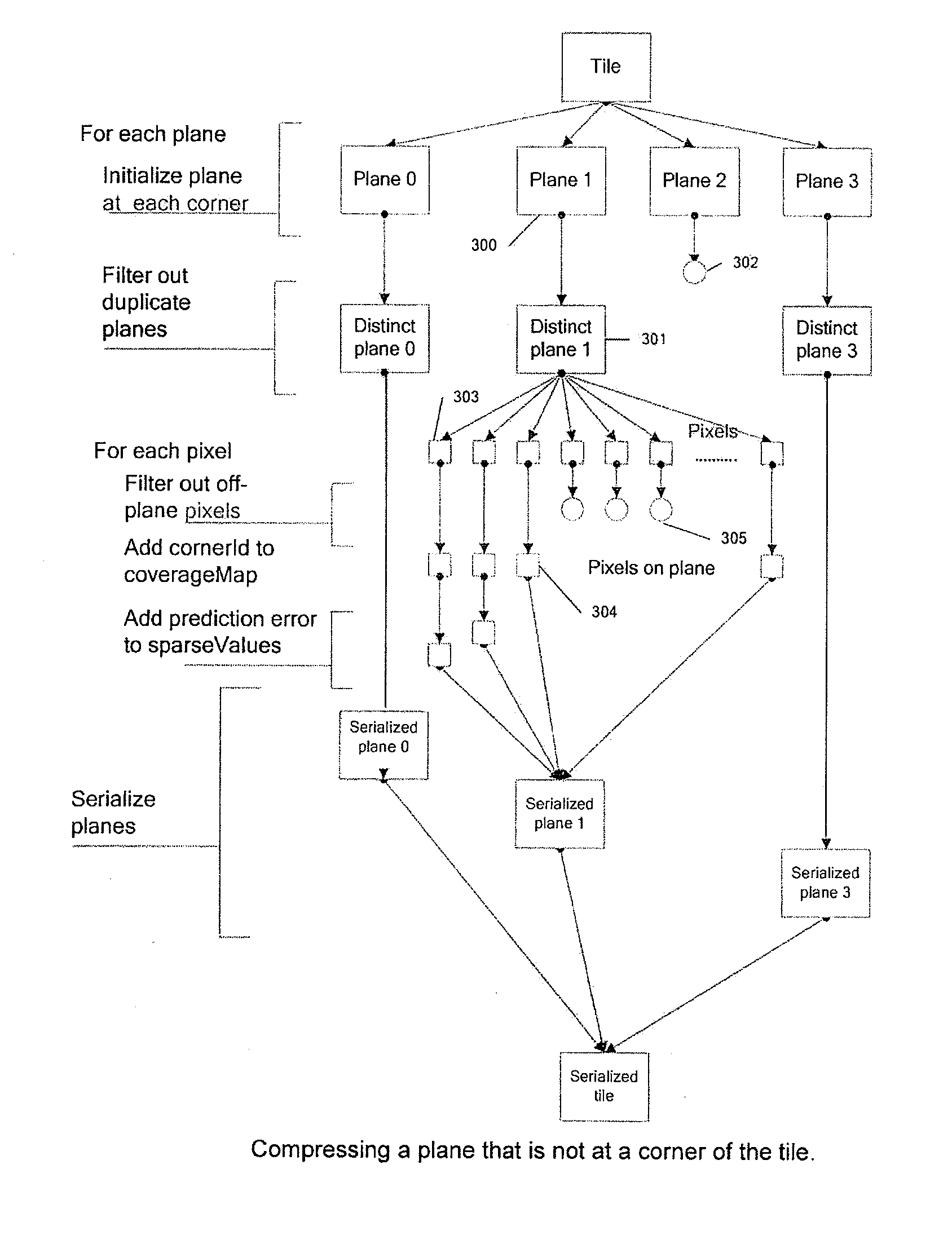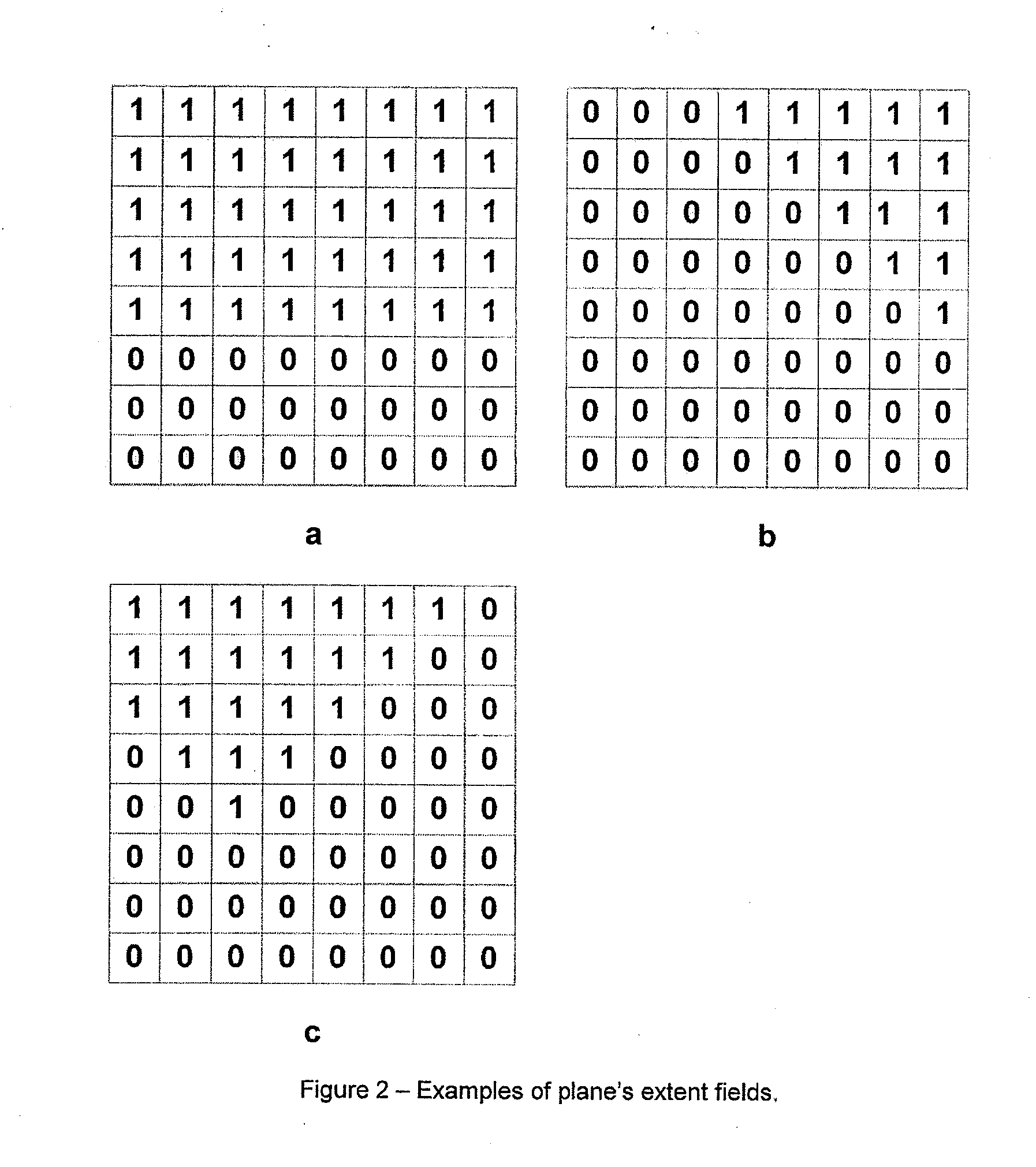Method and apparatus for tile based depth buffer compression
a depth buffer and depth buffer technology, applied in the field of methods and apparatus for tile based depth buffer compression, can solve the problems of large number of memory accesses (reads and writes) to the depth buffer memory, large and fast memory subsystems are expensiv
- Summary
- Abstract
- Description
- Claims
- Application Information
AI Technical Summary
Problems solved by technology
Method used
Image
Examples
Embodiment Construction
[0044]One way to reduce the quantity of memory data transferred in each read or write operation to and from a memory, without at the same time increasing data transfer frequency is by holding the data in memory in a compressed format, which is decompressed when read, either into a cache line or used directly. When writing data, either from a cache to memory or directly to memory, the reverse process of compression takes place. Embodiments of the invention use such an approach and are described below.
[0045]Depth buffers are rectangular arrays built up from the depth values from several overlapping polygonal planes. Each location in the array corresponds to a pixel position on the screen and contains a value representing the depth of a polygon fragment currently closest to the viewer at that position. In some depth buffers, each location also contains a stencil value. The embodiments described here only discuss the depth component of this buffer, though it can be extended straightforw...
PUM
 Login to View More
Login to View More Abstract
Description
Claims
Application Information
 Login to View More
Login to View More - R&D
- Intellectual Property
- Life Sciences
- Materials
- Tech Scout
- Unparalleled Data Quality
- Higher Quality Content
- 60% Fewer Hallucinations
Browse by: Latest US Patents, China's latest patents, Technical Efficacy Thesaurus, Application Domain, Technology Topic, Popular Technical Reports.
© 2025 PatSnap. All rights reserved.Legal|Privacy policy|Modern Slavery Act Transparency Statement|Sitemap|About US| Contact US: help@patsnap.com



